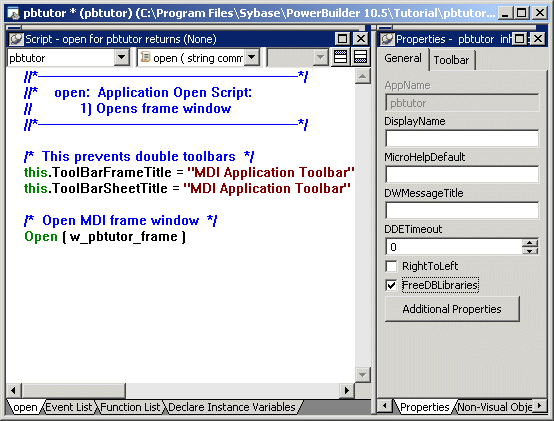Now you open an object created by the Template Application wizard.
Select File>Recent Workspaces from the menu bar, then MyWorkspace from the cascading menu.
In the System Tree, expand MyWorkspace, the pbtutor target, and pbtutor.pbl.
Double-click the pbtutor Application object
or
Right-click the pbtutor Application object and select Edit from the pop-up menu.
The Application painter opens. It displays different views of the pbtutor Application object. Your view layout scheme may look different. To display the default layout, select View>Layouts>Default.

The default Application painter layout displays two stacks of tabbed panes. The left stack contains tabs for a Script view (Open tab—it is set to the Open event on the Application object), an Event List view, a Function List view, and the Declare Instance Variables view. The right stack contains tabs for the Properties view and a Non-Visual Object List view.
Look at the code in the Open event in the Script view.
The PowerScript code that was generated by the wizard in the Application Object Open event calls a PowerScript function to open the main window in the application. You will modify this code later in the tutorial.